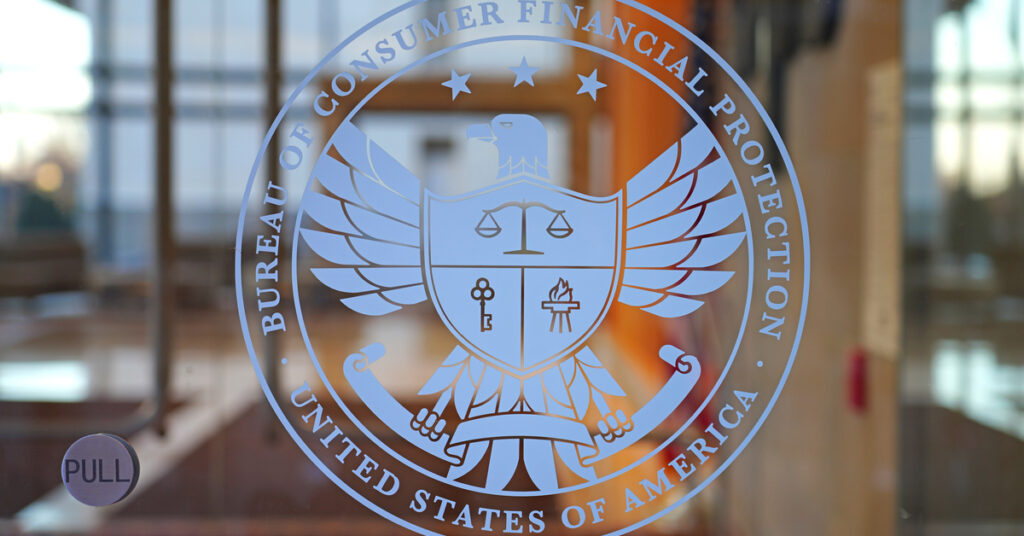The Consumer Financial Protection Bureau (CFPB) has issued a pair of final rules related to the new definition of qualified mortgages (QMs) — a step, the bureau says, that will ease the mortgage industry’s shift away from the “GSE patch” as its expiry draws near.
The two rules effectively implement changes the CFPB proposed earlier this year. The first rule, dubbed the General QM Final Rule, finalizes the CFPB’s June 22 proposal to amend the QM definition, replacing the previous 43% debt-to-income (DTI) threshold with a “price-based approach.”
Under this new approach, there will be new pricing thresholds that a loan has to meet to determine whether or not it meets the general QM definition. Per the CFPB, a loan receives a “conclusive presumption that the consumer had the ability to repay” if its annual percentage rate (APR) does not exceed the average prime offer rate (APOR) for a comparable transaction by 1.5 percentage points or more as of the date the interest rate is set. A loan receives a “rebuttable presumption” if its APR exceeds the APOR for a comparable transaction by 1.5 percentage points or more, but by less than 2.25 percentage points.
The final rule also allows for higher pricing thresholds for loans with smaller loan amounts, certain manufactured housing loans and subordinate-lien transactions.
“Through this General QM Final Rule, we are working to create an appropriate, more flexible General QM loan definition,” said Kathy Kraninger, director of the CFPB. “Our final rule’s price-based approach strikes the best balance between assessing consumers’ ability to repay and promoting access to responsible, affordable mortgage credit.”
The second rule — the Seasoned QM Final Rule — concretes the establishment of the “seasoned QM” category, a new type of QM loan proposed by the CFPB in August. The category essentially provides riskier loans a pathway to entering qualified mortgage status via a “seasoning period” of 36 months. During that time, lenders would keep such loans within their own portfolios while the loans comply with certain performance requirements along the way.
Want more news, topics and trends?
Get perspectives on the mortgage industry from thought leaders by subscribing to Scotsman Guide’s free digital editions.
Get these articles in your inbox
Sign up for our daily newsletter
Get these articles in your inbox
Sign up for our daily newsletter
Specifically, a loan held for seasoning can have no more than two delinquencies of 30 or more days and no delinquencies of 60 or more days by the end of the 36-month period. Lenders may accept deficient payments within a tolerance of $50 up to three times during the seasoning period without triggering a delinquency.
“This Seasoned QM Final Rule will ensure access to responsible, affordable credit in the mortgage market through responsible innovation,” Kraninger said. “Allowing lenders the flexibility to respond to changes in the economy while still ensuring a consumer has the ability to repay will help many consumers achieve their dream of owning a home.”
Both rules will take effect 60 days after their publication in the Federal Register. The General QM Final Rule will have a mandatory compliance date of July 1, 2021; during the period between when the General QM Final Rule takes effect and July 1, there will be an “optional early compliance period,” when lenders will be able to use either the old, DTI-based definition or the new, price-based approach.
A statement from the CFPB said that the issuance of the two rules will “support a smooth and orderly transition away from the [GSE] patch and maintain access to responsible, affordable mortgage credit upon its expiration.”
Facilitating the transition away from the patch has been one of the priorities for the CFPB and the Federal Housing Finance Agency for some time. Officially the Ability-to-Repay/Qualified Mortgage (ATR/QM) rule, the patch is an exemption to the general QM standard that applies to mortgages backed by Fannie Mae and Freddie Mac, the two government-sponsored enterprises (GSEs). Via the patch, Fannie and Freddie loans are still eligible as QMs even if the borrower carries a debt-to-income ratio above 43%.
The patch had been scheduled to expire in January, but the CFPB extended the patch until the QM definition was amended. Now, the patch is set to sunset on the General QM Final Rule’s July 1 mandatory compliance date.
The Mortgage Bankers Association (MBA) praised the CFPB for finalizing the two new rules, reaffirming its support for them during their respective proposal periods and lauding the changes made by the bureau.
“The revisions to these rules will preserve and expand responsible access to affordable credit while retaining core consumer protections,” said MBA President and CEO Bob Broeksmit. “In particular, these rules remove cumbersome requirements for non-traditional sources of income and expand consumers’ choices.”





















































